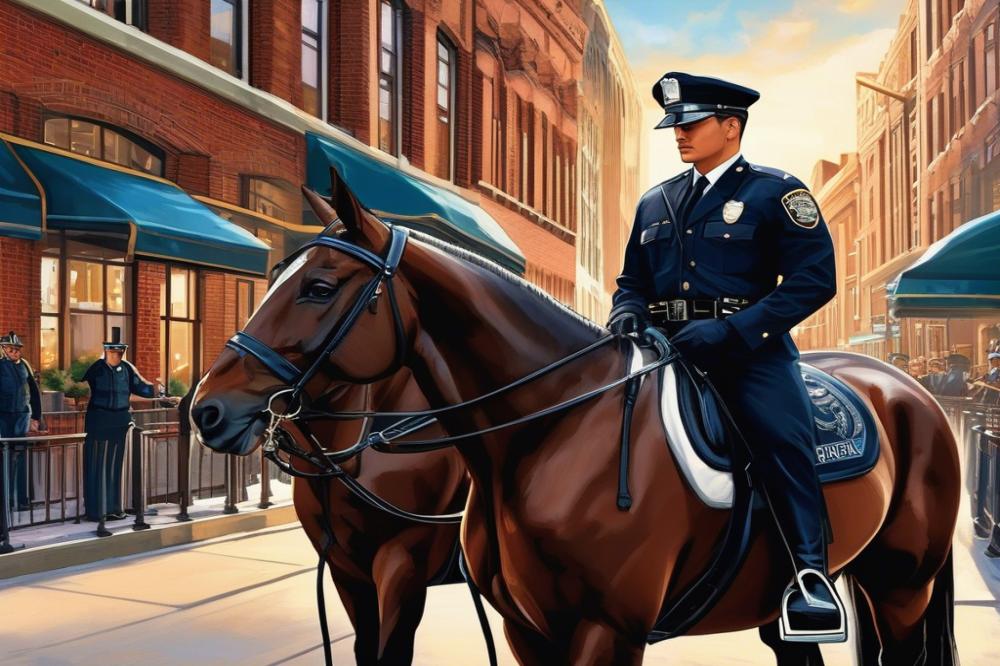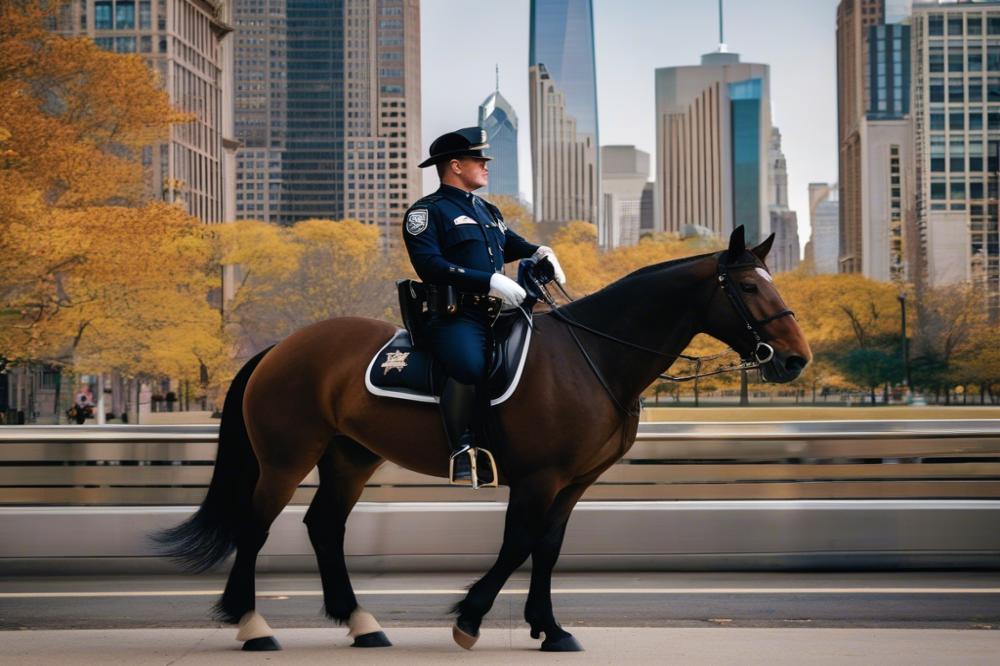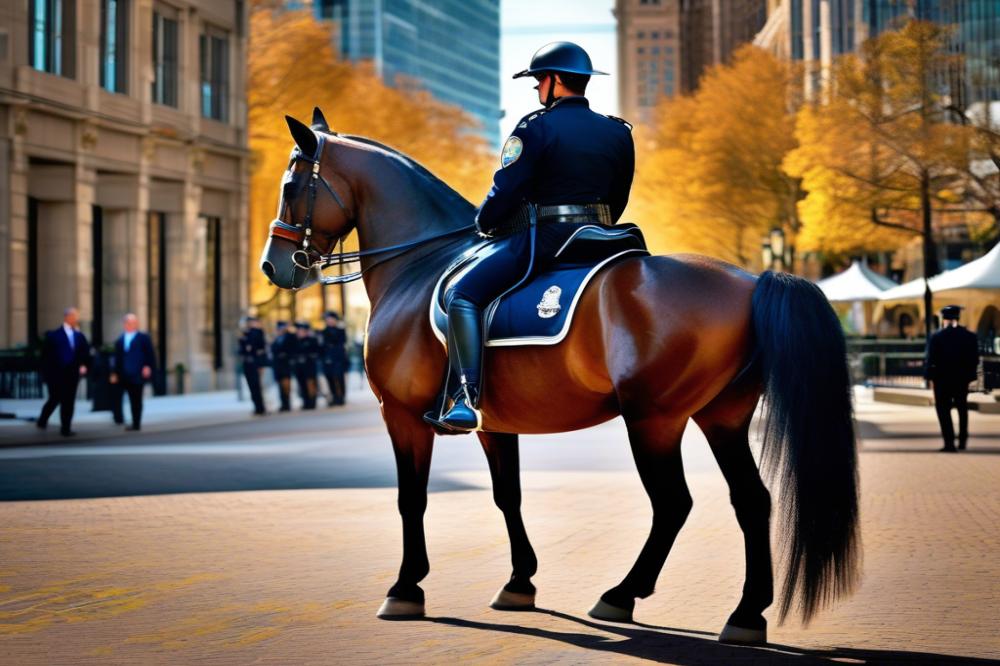breeding for bravery: The bloodlines Behind America’s police horses
police horses play a vital role in law enforcement. They serve as crucial partners for officers in multiple settings. These majestic animals help maintain public order during events, patrolling busy streets, and crowd control. Their presence often calms the crowd and reinforces a sense of safety. bravery is an essential trait for any police officer. However, this quality is just as critical in their equine counterparts.
Traits like courage and composure are often inherited. breeding practices focus on selecting horses that exhibit these characteristics. Specific bloodlines produce animals that can withstand stress and resist panic. A horse that can handle the chaos of a riot or the noise of a bustling city is invaluable. Police departments seek out candidates with strong nerves and calm demeanors.
Temperament greatly affects a horse’s performance in the field. Horses that are easily frightened might not respond well under pressure. That is why understanding lineage becomes integral. Breeders often prioritize horses that have shown bravery and steady behavior over generations. This careful selection process shapes the traits that make these animals suitable for police work.
Partnership between the horse and the officer is built on trust and mutual respect. Horses must feel secure in their environment to execute their duties effectively. Breeding for bravery helps create animals that are reliable in high-stakes situations. Dedicated breeders continue to refine techniques to produce the best candidates for law enforcement.
The Importance of Bloodlines in Police Horses

Selecting the right breed for police work is crucial. Different breeds bring various traits to the table. Some horses are naturally more courageous, while others display incredible stamina. When training a horse for law enforcement, specific characteristics are essential.
Key Traits and Characteristics Sought
Officers prioritize temperament above all else. A calm and adaptive horse is necessary in stressful situations. Horses must respond well to commands, even in chaotic environments. Size can also impact effectiveness; larger horses often project authority, which can help deter crowds.
Intelligence plays a vital role. A clever horse can quickly learn tasks, making it easier for officers to train them. Endurance is another critical factor. Officers require horses capable of handling long hours, whether patrolling events or navigating city streets.
Historical Context on Development
The history of police horse breeds reflects the needs of law enforcement. Initially, various breeds were utilized, mostly based on local availability. Over time, specific traits became more sought after. The Morgan and Thoroughbred, for instance, have a storied place in police units.
Breeding programs emerged to focus on the ideal mix of qualities. By carefully selecting horses for bravery, intelligence, and strength, police departments can create effective units. In this way, dedicated breeders have significantly influenced modern policing.
A strong lineage typically indicates a higher probability of desired traits. Horses with proven ancestors often display desirable characteristics that enhance their performance. This idea of lineage informs many decisions in choosing horses today. Ultimately, selecting the right horse goes beyond simple preferences; it’s about building a formidable team.
Temperament and Training in Police Horses

The temperament of a horse holds great importance in police work. Calmness is crucial in high-pressure situations. Horses that are easily frightened can pose a risk to both their handlers and the public. Fearful reactions can lead to dangerous circumstances. A brave horse allows officers to perform their duties effectively.
Different breeding lines have traits that can contribute to temperament. Some breeds are more likely to display confidence and resilience. Thoroughbreds and Warmbloods often excel in police settings. Their ability to remain composed during unexpected events matters significantly.
Training methods vary but share a common goal: preparing the animal for real-life challenges. Basic groundwork establishes trust between horse and rider. Consistent exposure to different environments also plays a vital role. Officers often lead their mounts through crowded streets or noisy events to build familiarity.
Desensitization is a critical aspect of equine training. Horses must learn to accept various stimuli without panic. This includes loud sirens, gunshots, and sudden movements. Through gradual exposure, trainers can help reduce anxiety, which ultimately aids bravery.
Each session is designed to build confidence while reinforcing skills. Positive reinforcement encourages desired behaviors, increasing willingness to engage in complex tasks. Riders must remain calm and patient, as animals sense their emotions. A confident handler can instill bravery in the horse.
The relationship between training and courage can’t be overstated. Officers depend on their horses during high-stress times. Without a solid training foundation, even the strongest animal may falter. Developing bravery through practiced responses helps the horse to manage challenging situations. Successful teams demonstrate how temperament and training come together seamlessly.
Selecting the Right Breed for Law Enforcement Needs
Different breeds of horses serve unique roles in the realm of policing. Percherons, Thoroughbreds, and Quarter Horses are among the most popular choices. Each breed brings specific traits that can enhance a law enforcement team’s effectiveness.
Percherons are known for their strength and calm demeanor. These draft horses provide stability in various situations. Their size can intimidate during crowds and protests, which can help maintain order. Additionally, they are often more patient, making them easier to handle in challenging environments.
Thoroughbreds offer qualities that are equally appealing for police work. Their high energy levels and speed can be crucial in pursuits where quick action is necessary. These horses have also been trained to be responsive and alert, which is vital for officers on patrol. Their sensitivity to commands allows for effective communication between horse and rider.
Quarter Horses stand out for their versatility and agility. Their ability to change direction quickly can be an asset in crowded urban settings. These horses are also generally easy to train, making them apt for a variety of tasks. Officers often appreciate how Quarter Horses can adapt to different situations due to their quick learning capability.
When selecting a breed, certain criteria must be examined. Size and strength are important factors for crowd control situations. Conversely, temperament is vital for the horse’s overall behavior in public. Police officers need animals that remain calm under pressure and can be handled by riders of varying skill levels.
Behavioral characteristics are just as critical as physical attributes. Horses that demonstrate confidence, adaptability, and a friendly nature can foster a positive connection with the community. This rapport can help officers engage more effectively with residents and reduce tensions in delicate situations.
To sum up, each breed has distinct traits that can enhance community policing efforts. By choosing the right horse, law enforcement can build a team that is not only effective in maintaining order but also promotes trust and safety within the community.
The Role of Police Horses in Community Policing
Community relations benefit greatly from the presence of mounted units. Police horses create a friendly and approachable image. People often feel more at ease when an officer is on horseback. This connection helps bridge the gap between law enforcement and the public.
Engaging with community members happens at events, festivals, and fairs. Officers on horse patrols can easily interact with kids and families. Their large demeanor draws attention and sparks conversations. Seeing a horse trot by makes people curious and approachable.
In some neighborhoods, the sight of these majestic animals brings joy. Children often run up to them, excited to pet the horses. This interaction fosters trust and builds relationships. As a result, it encourages a sense of safety in the area.
Crime prevention can take on different forms with mounted patrols. Officers can survey large crowds effectively from horseback. Their height allows for a better view of potential issues before they escalate. As a result, their presence often deters criminal activity.
Feelings of safety increase when the community knows officers are nearby. Trust in law enforcement grows when people see them engaging positively. When officers connect with residents, the community feels more secure. Such bonds lead to better cooperation and communication in times of need.
Horse Care and Maintenance for Working Horses
Caring for working horses requires diligence and expertise. Daily routines play a vital role in the health and performance of these animals. Regular grooming is essential, as it helps to remove dirt and debris while also strengthening the bond between horse and handler. Additionally, it allows for early detection of any skin issues or injuries.
Veterinary care is another critical component. Routine check-ups help monitor the animals’ overall health and address any concerns before they escalate. Vaccinations are scheduled based on the horse’s exposure to various diseases, especially in urban settings. Keeping up with dental care is just as important; a horse’s teeth need to be checked and floated regularly to avoid discomfort.
Nutrition is a significant aspect of maintaining peak performance. High-quality forage and grains should form the basis of their diet. Horses require a balanced intake of vitamins and minerals to thrive. The needs of each horse may differ based on age, weight, and work demands, so it’s important to customize feeding regimens accordingly.
Hydration should not be overlooked. Fresh, clean water must be available at all times. Dehydration can affect a horse’s performance and overall health. Handling changes in the season also matter. During warmer months, increased temperatures mean that more fluids are necessary.
Exercise is crucial in maintaining their fitness levels. Police horses often engage in various activities that mimic the duties they perform on duty. Regular riding sessions are combined with training to enhance endurance and agility. Furthermore, rest is just as critical as exercise. Sufficient downtime allows muscles to recover and ensures horses remain healthy.
In summary, daily care for these animals involves attentive grooming, veterinary visits, and a careful eye on nutrition. Sticking to a routine can help maintain a horse’s well-being. Attention to these details facilitates a more effective and responsive partner in the field. Always remember that a healthy horse is more prepared for the demands of its job.
Final Thoughts
The bravery of police horses stems from carefully selected bloodlines. These animals play an essential role in law enforcement, helping officers maintain peace and build community ties. Training is crucial for developing their ability to face various situations often encountered on the streets. Many breeds exhibit traits that enhance their capacities, like courage and steadiness, making them fit for duty.
Programs focused on these equine partners face an evolving landscape. As technology advances, the need for traditional policing methods might be questioned. Yet, the unique bond between horse and officer has not diminished. This relationship fosters trust with the community, showing that safety can come from compassion as well as authority.
Moving forward, police horse units could benefit from incorporating new strategies and training methods. Innovations in handling may enhance their performance during demonstrations or crowd control. Recognizing their contributions will ensure that these brave animals continue to have a place within modern law enforcement.
In summary, police horses are more than just tools; they are partners with incredible potential. Understanding their background and capabilities highlights the importance of their presence today. As society evolves, so too must our appreciation for these noble creatures and their invaluable role in promoting justice.



